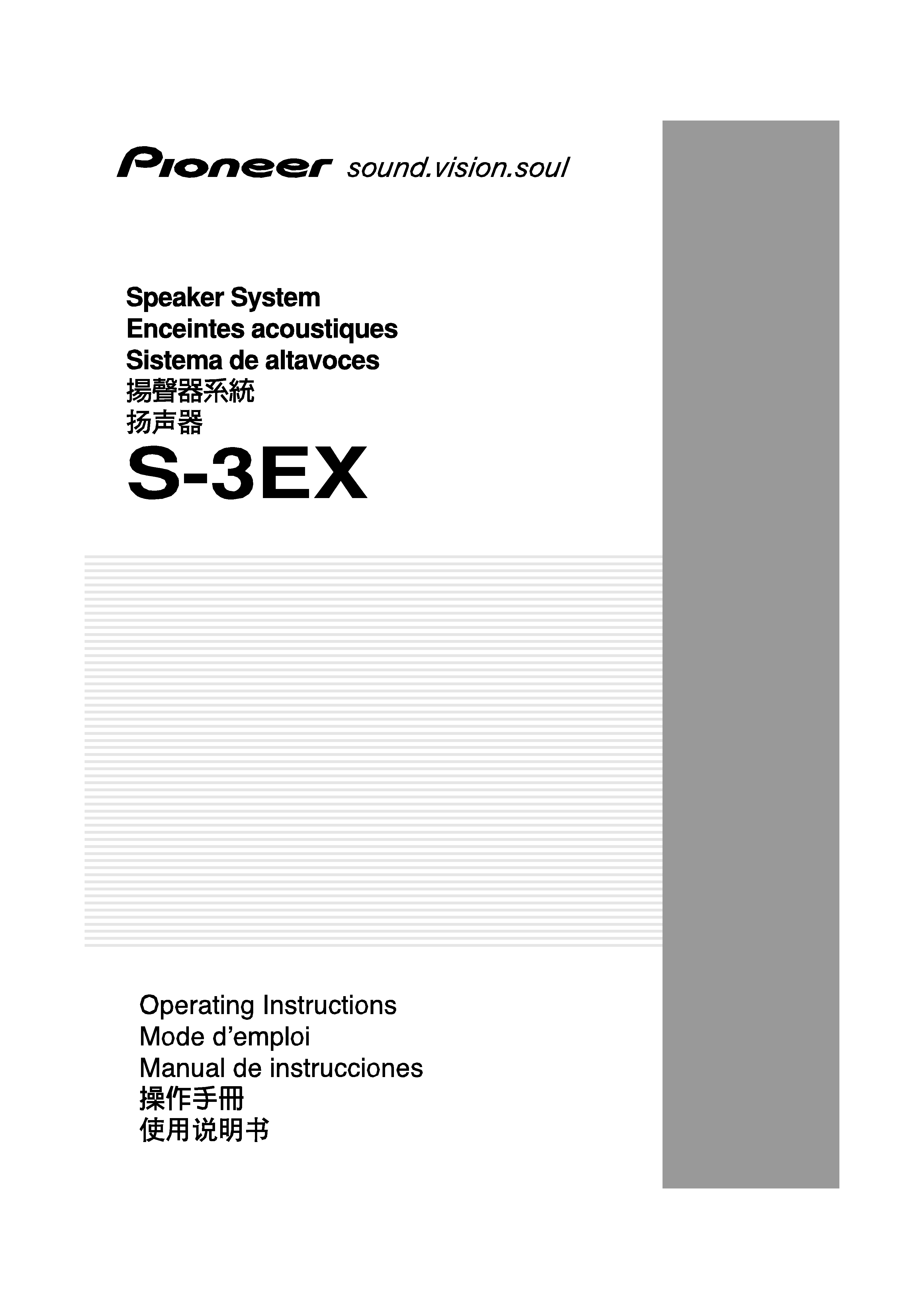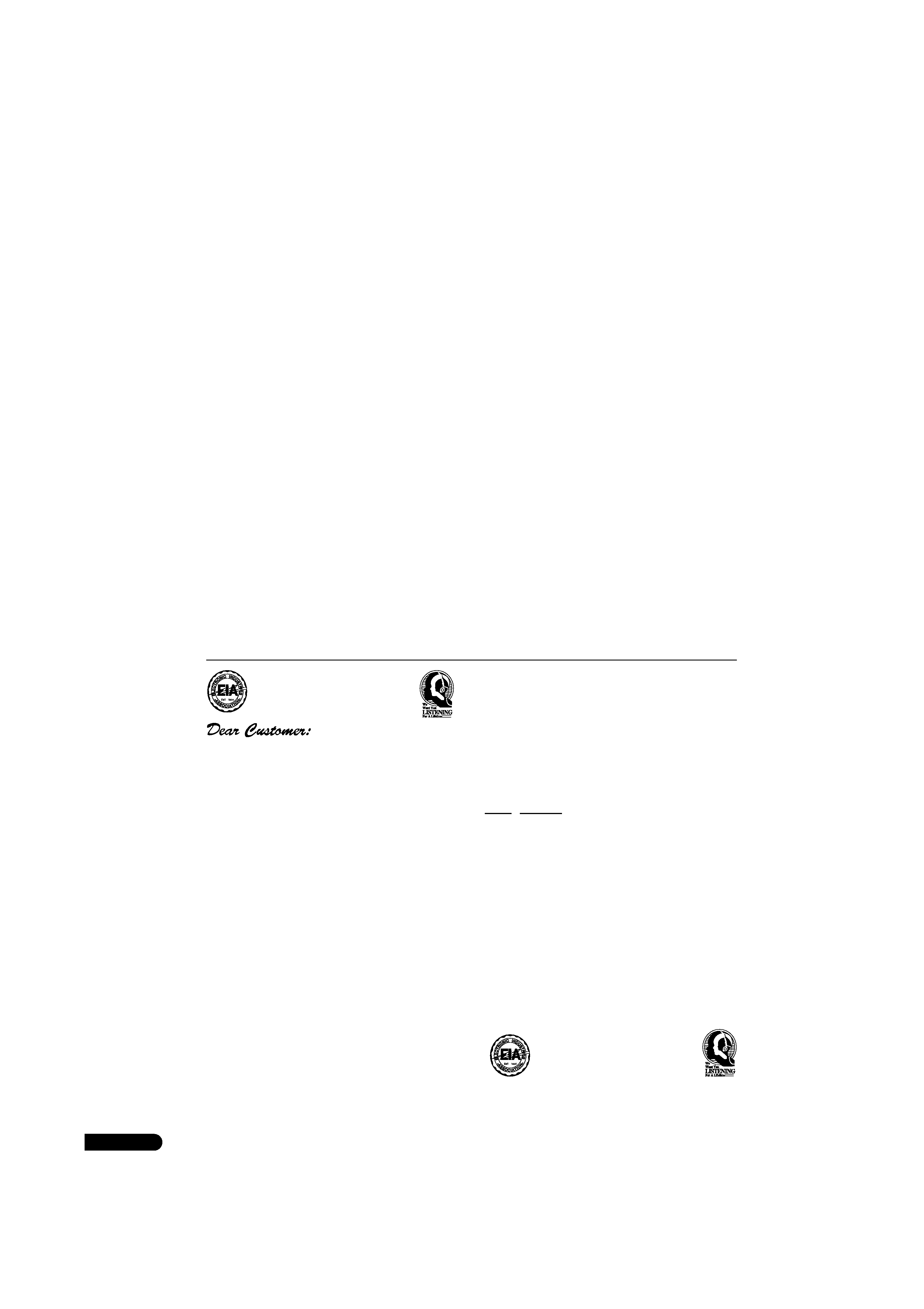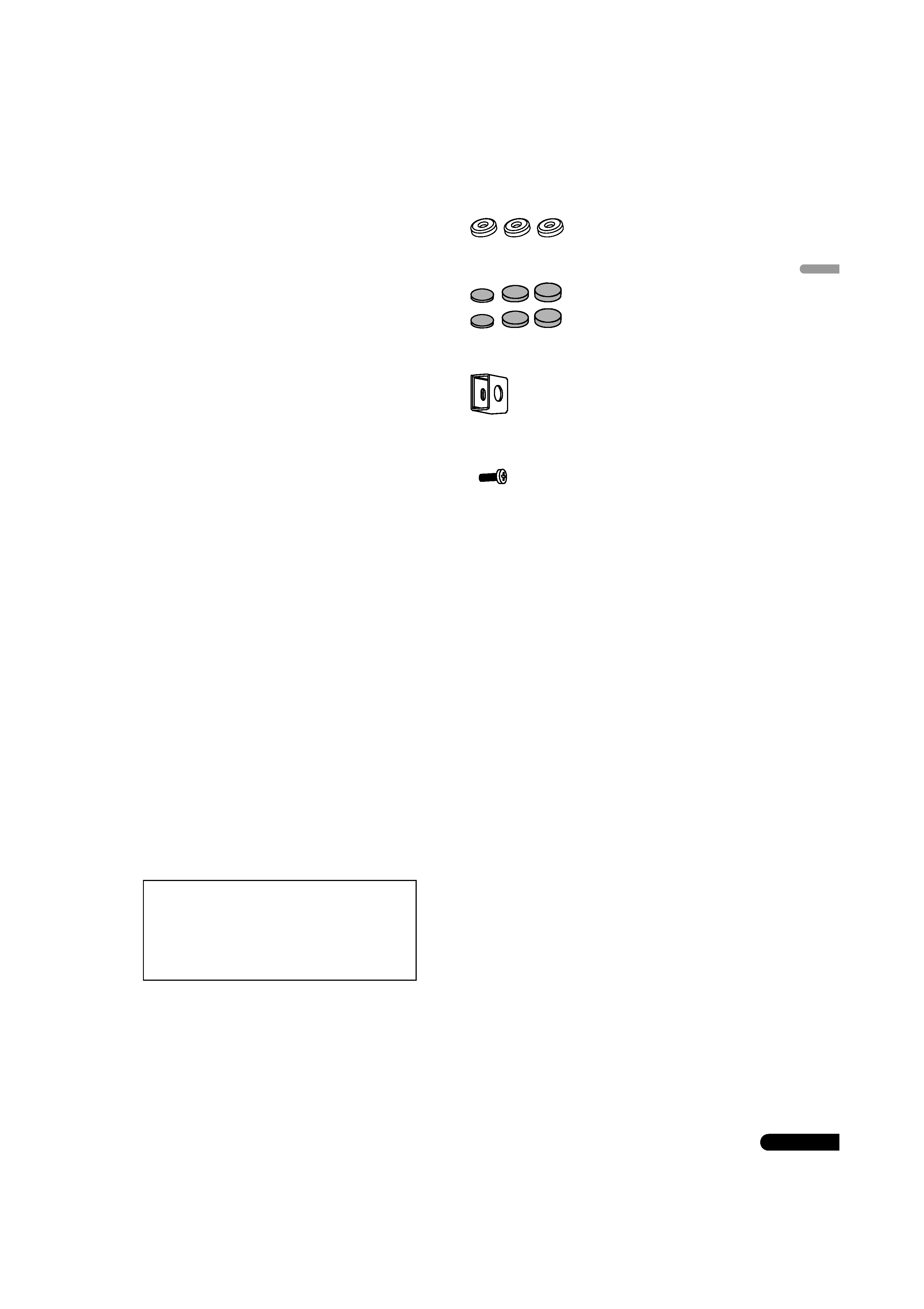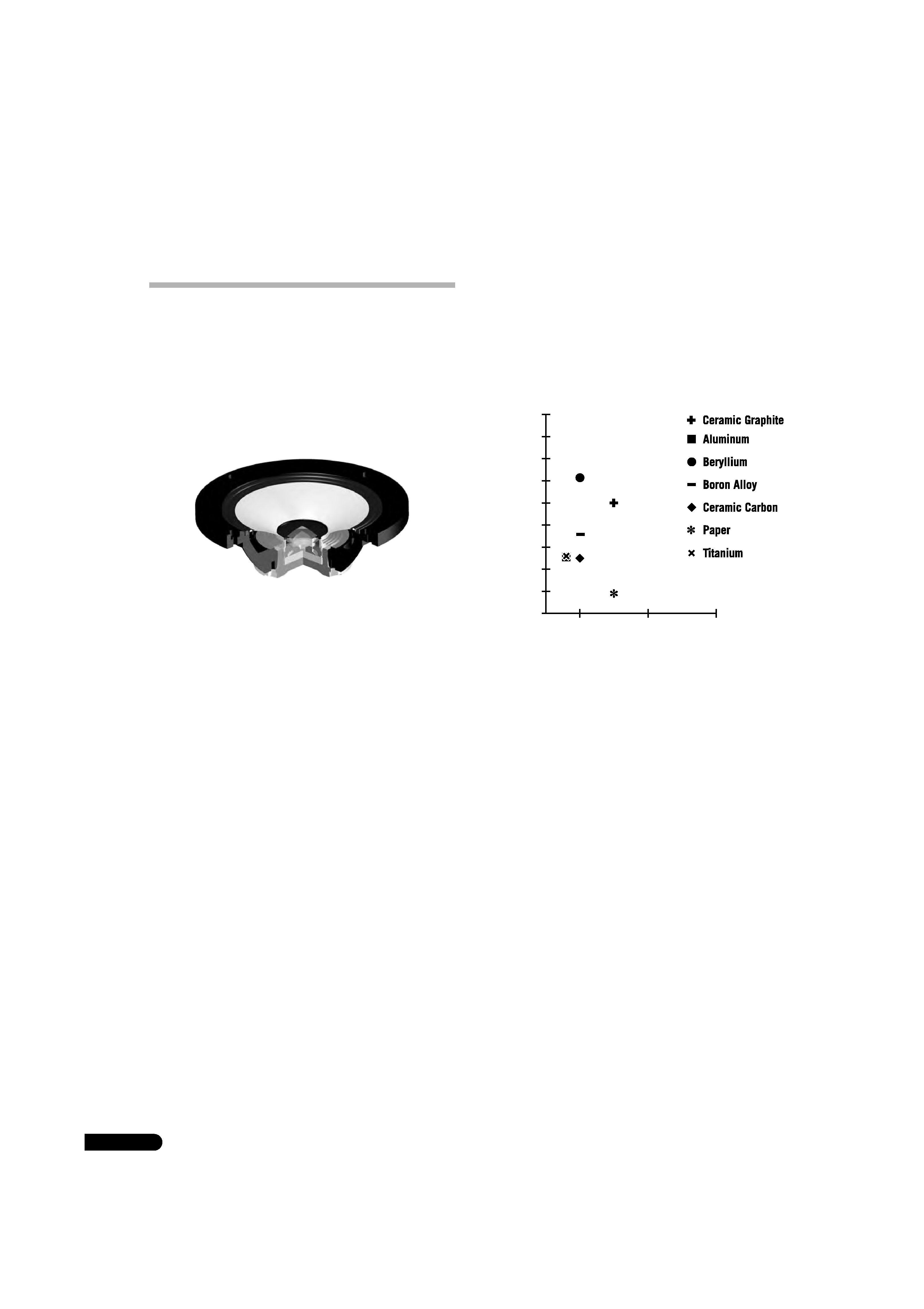
1
En
S-3EX_EN.book
1

2
En
S001_En
Selecting fine audio equipment such as the unit
you've just purchased is only the start of your
musical enjoyment. Now it's time to consider how
you can maximize the fun and excitement your
equipment offers. This manufacturer and the
Electronic Industries Association's Consumer
Electronics Group want you to get the most out of
your equipment by playing it at a safe level. One that
lets the sound come through loud and clear without
annoying blaring or distortion-and, most importantly,
without affecting your sensitive hearing.
Sound can be deceiving. Over time your hearing
"comfort level" adapts to higher volumes of sound.
So what sounds "normal" can actually be loud and
harmful to your hearing. Guard against this by
setting your equipment at a safe level BEFORE your
hearing adapts.
To establish a safe level:
· Start your volume control at a low setting.
· Slowly increase the sound until you can hear it
comfortably and clearly, and without distortion.
Once you have established a comfortable sound
level:
· Set the dial and leave it there.
Taking a minute to do this now will help to prevent
hearing damage or loss in the future. After all, we
want you listening for a lifetime.
We Want You Listening For A Lifetime
Used wisely, your new sound equipment will
provide a lifetime of fun and enjoyment. Since
hearing damage from loud noise is often
undetectable until it is too late, this manufacturer
and the Electronic Industries Association's
Consumer Electronics Group recommend you avoid
prolonged exposure to excessive noise. This list of
sound levels is included for your protection.
Decibel
Level Example
30
Quiet library, soft whispers
40
Living room, refrigerator, bedroom away from traffic
50
Light traffic, normal conversation, quiet office
60
Air conditioner at 20 feet, sewing machine
70
Vacuum cleaner, hair dryer, noisy restaurant
80
Average city traffic, garbage disposals, alarm clock
at two feet.
THE FOLLOWING NOISES CAN BE DANGEROUS
UNDER CONSTANT EXPOSURE
90
Subway, motorcycle, truck traffic, lawn mower
100
Garbage truck, chain saw, pneumatic drill
120
Rock band concert in front of speakers,
thunderclap
140
Gunshot blast, jet plane
180
Rocket launching pad
Information courtesy of the Deafness Research Foundation.
Thank you for buying this Pioneer product. Please read through these operating instructions so you will know how to operate your model
properly. After you have finished reading the instructions, put them away in a safe place for future reference.
Contents
Before you start
What's in the box
About the EX series
Technology behind the S-3EX
. . . . . . . . . . . . . . . . . . . . . . . . . . . . . 4
CST
. . . . . . . . . . . . . . . . . . . . . . . . . . . . . . . . . . . . . . . . . . . . . . . . 4
Ceramic Graphite Diaphragm
. . . . . . . . . . . . . . . . . . . . . . . . . . . . 4
Magnesium Alloy Diaphragm
. . . . . . . . . . . . . . . . . . . . . . . . . . . . 4
Bass Drivers
. . . . . . . . . . . . . . . . . . . . . . . . . . . . . . . . . . . . . . . . . 5
Bass Enclosure Construction
. . . . . . . . . . . . . . . . . . . . . . . . . . . . 5
Crossover Networks
. . . . . . . . . . . . . . . . . . . . . . . . . . . . . . . . . . . 5
Collaboration with Air Studios
. . . . . . . . . . . . . . . . . . . . . . . . . . . 5
Installation and Placement
How to install
. . . . . . . . . . . . . . . . . . . . . . . . . . . . . . . . . . . . . . . . . 6
Mounting the Fall-Prevention Fastener
. . . . . . . . . . . . . . . . . . . . . 6
Choosing Where To Place The Speaker Systems
. . . . . . . . . . . . . 6
Connections
Connecting to an amplifier
. . . . . . . . . . . . . . . . . . . . . . . . . . . . . . . 8
Connecting the cables
. . . . . . . . . . . . . . . . . . . . . . . . . . . . . . . . . . 8
Single-Wire Connections
. . . . . . . . . . . . . . . . . . . . . . . . . . . . . . . 9
Bi-Wire Connections
. . . . . . . . . . . . . . . . . . . . . . . . . . . . . . . . . . . 9
Bi-Amplification Connections
. . . . . . . . . . . . . . . . . . . . . . . . . . . 10
Other Information
Attaching/Removing the Grille Cover
. . . . . . . . . . . . . . . . . . . . . . 11
Cleaning the speaker cabinet
. . . . . . . . . . . . . . . . . . . . . . . . . . . . 11
Specifications
. . . . . . . . . . . . . . . . . . . . . . . . . . . . . . . . . . . . . . . . 11
S-3EX_EN.book
2

3
En
English
Before you start
· The nominal impedance of this speaker system is 6
.
Connect the speaker system to an amplifier with a load
impedance ranging from 4
to 16 (a model with "4 to 16
" displayed on the speaker output terminals).
In order to prevent damage to the speaker system resulting from
input overload, please observe the following precautions:
· Do not supply power to the speaker system in excess of the
maximum permissible input.
· When using a graphic equalizer to emphasize loud sounds in
the high-frequency range, do not use excessive amplifier
volume.
· Do not try to force a low-powered amplifier to produce loud
volumes of sound (the amplifier's harmonic distortion will be
increased, and you may damage the speaker).
Caution: installation
· When placing this unit, ensure that it is firmly secured and
avoid areas where it may be likely to fall and cause injury in the
event of a natural disaster (such as an earthquake).
· Do not attach these speakers to the wall or ceiling. They may
fall off and cause injury.
· Do not install your speakers overhead on the ceiling or wall. If
improperly attached, the speaker grille can fall and cause
damage or personal injury.
· Switch off and unplug your AV equipment and consult the
instructions when connecting up components. Make sure you
use the correct connecting cables.
Caution: in use
· Do not place the speaker on an unstable surface. It could
present a hazard if it falls, as well as damaging the equipment.
· Do not use the speaker to output distorted sound for long
periods of times. This can result in a fire hazard.
· Do not sit or stand on the speaker, or let children play on the
speaker.
· Do not put large or heavy objects on top of the speaker.
· Do not place magnetic objects such as screwdrivers or iron
parts near the tweeter or midrange. Since the speakers use
strong magnets, the objects may be attracted, causing injury
or damaging the diaphragm.
What's in the box
Spike bases x3
Mounting pads 3 types, 2 each
Metal catch x1
Screw (for metal catch) x1
Grille x1
Operating instructions
CAUTION
These speaker terminals carry
HAZARDOUS LIVE
voltage. To prevent the risk of electric shock when
connecting or disconnecting the speaker cables,
disconnect the power cord before touching any
uninsulated parts.
D3-4-2-2-3_A_En
WARNING: Handling the cord on this product or
cords associated with accessories sold with the
product will expose you to chemicals listed on
proposition 65 known to the State of California and
other governmental entities to cause cancer and
birth defect or other reproductive harm.
D36-P4_A_En
Wash hands after handling
S-3EX_EN.book
3

4
En
About the EX series
The EX series, incorporating the abundant technological know-how behind Pioneer's flagship TAD speaker series, was developed
with the goal of creating the ultimate speaker possible in its price range.
The design and production of the EX series result from an international effort that represents the finest in Pioneer's speaker technology.
Technology behind the S-3EX
CST
The core driver of the system is the Coherent Source Transducer
(CST), which draws on the technology used in TAD. The tweeter
diaphragm is mounted concentrically within the apex of the
midrange cone and provides a point source of sound from 400 Hz
to 100 kHz. The CST ensures a perfect spectral balance between
the direct and reflected sounds that arrive at the listener's ears,
providing a more consistent sound throughout the listening room
and improved imaging capability.
Ceramic Graphite Diaphragm
The CST's tweeter features a ceramic graphite diaphragm that
provides top-level strength and dampening characteristics that
are practically unrivaled by any other available materials currently
used in high-end audio speaker systems. Ceramic graphite's
lightness and exceptional strength combine to create speakers
whose diaphragm resonance can be pushed far beyond their
audible range.
Magnesium Alloy Diaphragm
The CST's midrange features a magnesium alloy diaphragm
whose characteristic lightness and high inner loss provide
excellent transience and minimal coloration of midrange sounds.
18 000
Velocity (m/s)
Inner Loss
16 000
14 000
12 000
10 000
8 000
6 000
4 000
2 000
0.005
0.015
0.025
0
S-3EX_EN.book
4

5
En
English
Bass Drivers
The bass driver pictured below serves as the foundation of the S-
3EX speaker system. The driver's strength is the result of the
Aramid/Carbon composite material, originally created during the
development of the S-1EX, that is used in its diaphragm. Pioneer's
exclusive LDMC magnetic circuit technology has been
incorporated in order to preserve linearity from low to high output
levels and minimize distortion.
Bass Enclosure Construction
The unique form of the S-3EX is based upon logical necessity. In
order to synchronize the arrival time of sound from the CST and
the two bass drivers, each driver is mounted upon a baffle that
serves to create a highly delicate curve known as the "precision
curve" (see illustration below). Made of up to 100 mm thick MDF
(Medium Density Fiberboard), this baffle is, moreover, strong
enough to contain the force of the drivers. Additionally, the bass
port has been carved out of an extremely thick block of MDF,
resulting in the reduction of wind noise for clear, deep bass.
Crossover Networks
The crossover networks use only the finest components. Air cored
coils, noninductive resistors, and film capacitors in the signal
path are all carefully chosen and optimized for the CST driver to
provide the greatest transparency to the signal. The bass drivers
use silicon steel plate core inductors that minimize distortion and
loss during energy transfer. All components are connected
directly to their respective wiring materials, instead of a printed
circuit-board, allowing for minimal loss and maximum
performance.
Collaboration with Air Studios
Since its establishment by George Martin in 1969, London,
England's Air Studios has earned unequivocal respect from
scores of artists who recognize it as the world's premier recording
studio. The Air Studios seal that was awarded to the S-3EX
indicates that these speakers are capable of producing the high-
quality sound demanded by the world's top-class sound creators.
1 m
3 m
precision curve
S-3EX_EN.book
5
